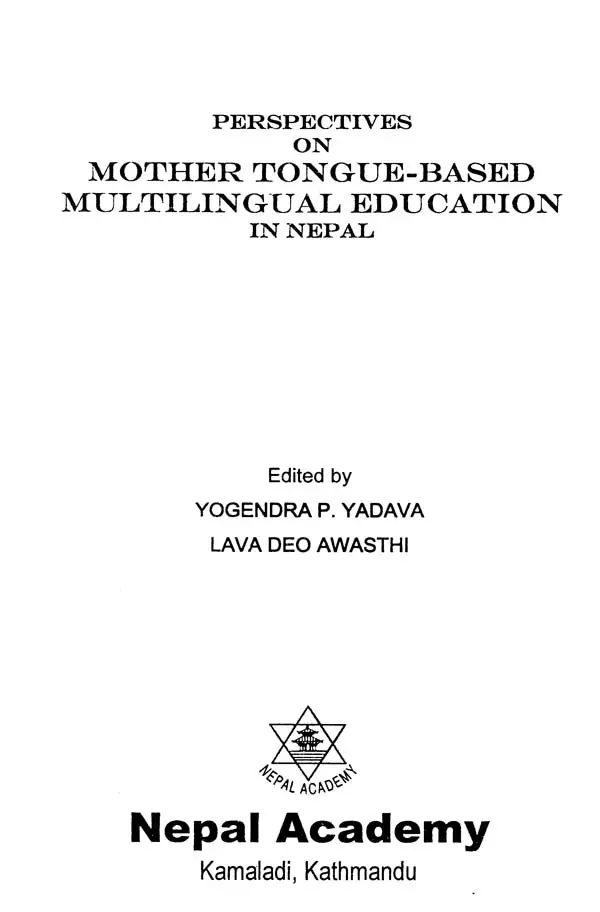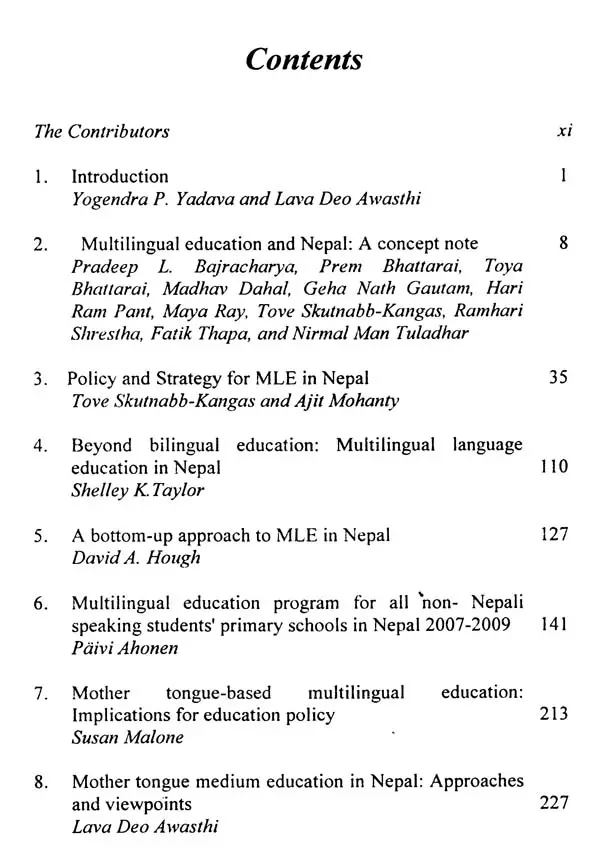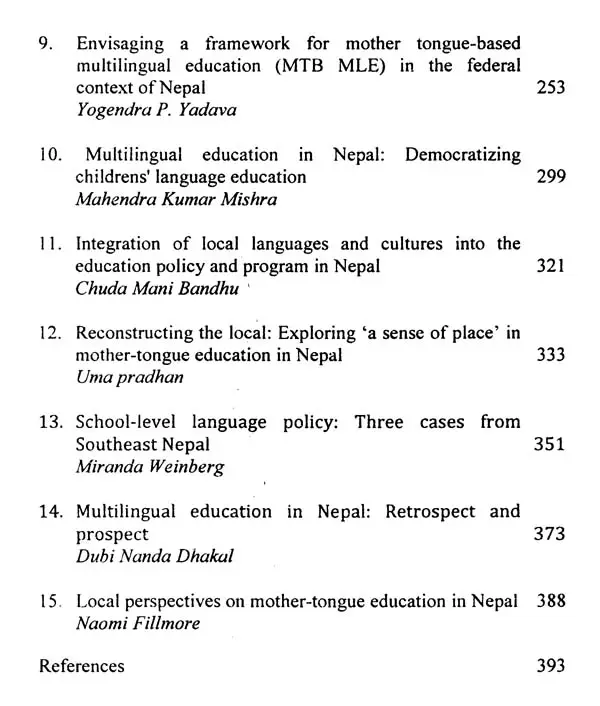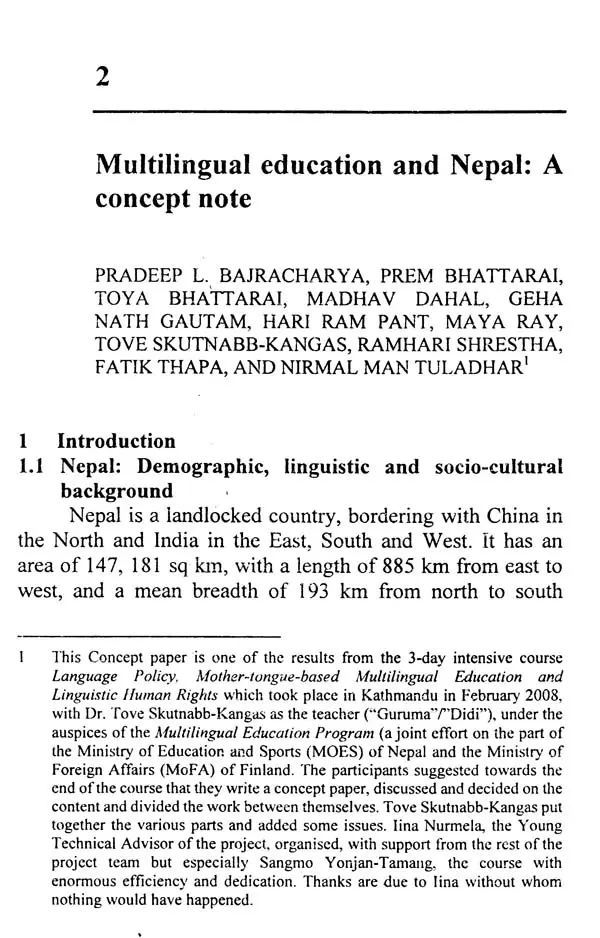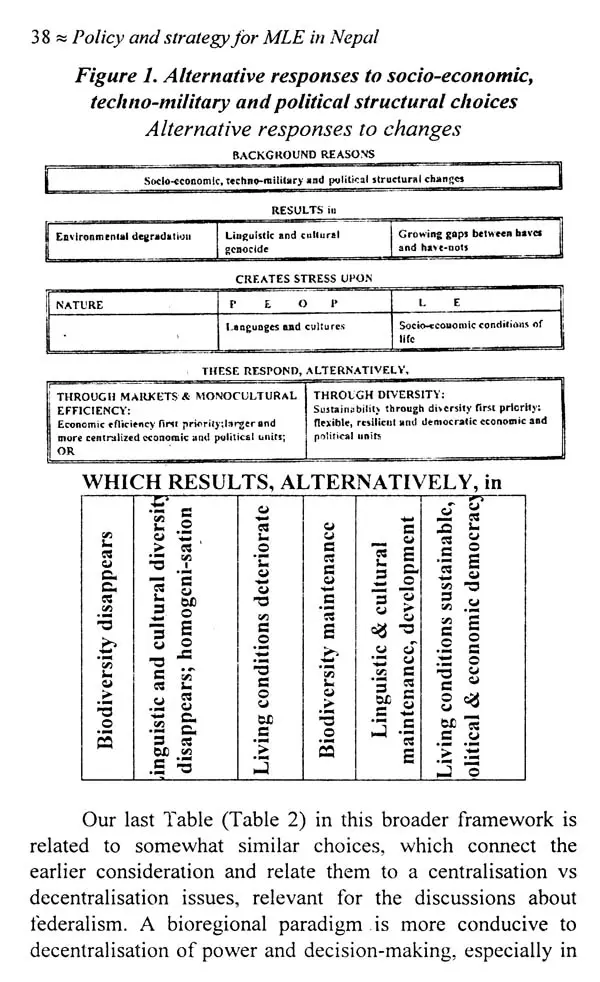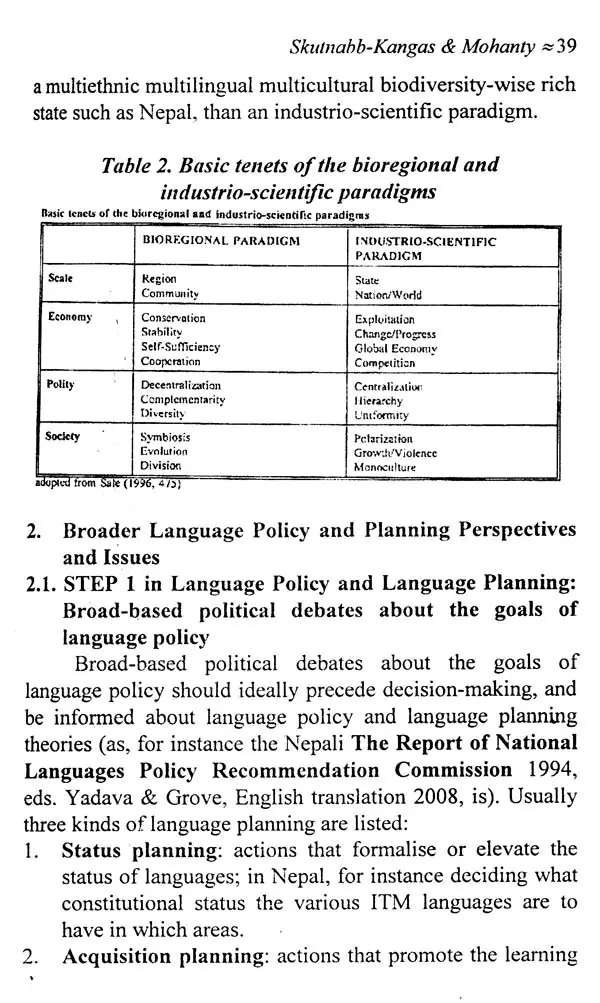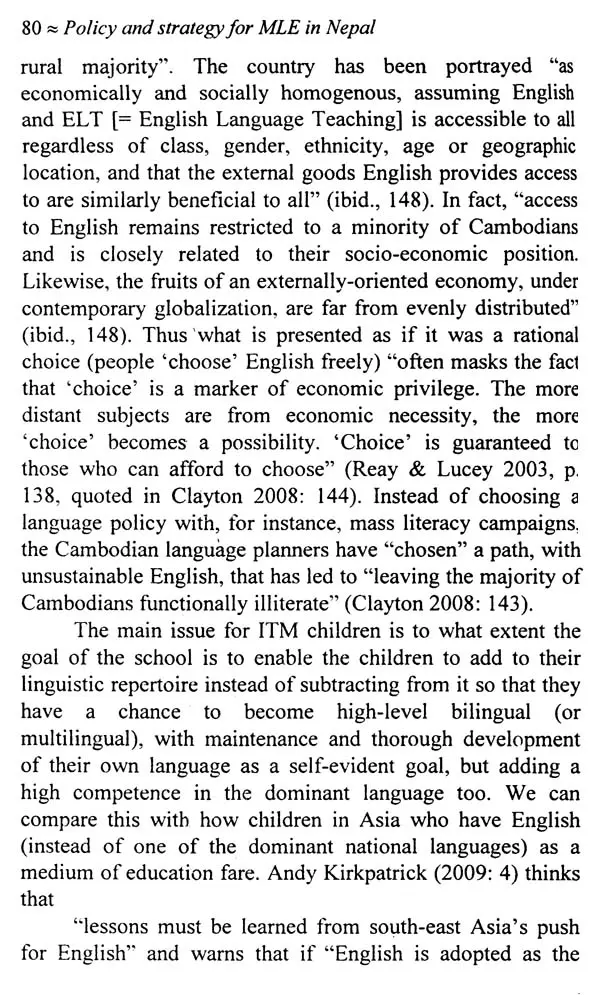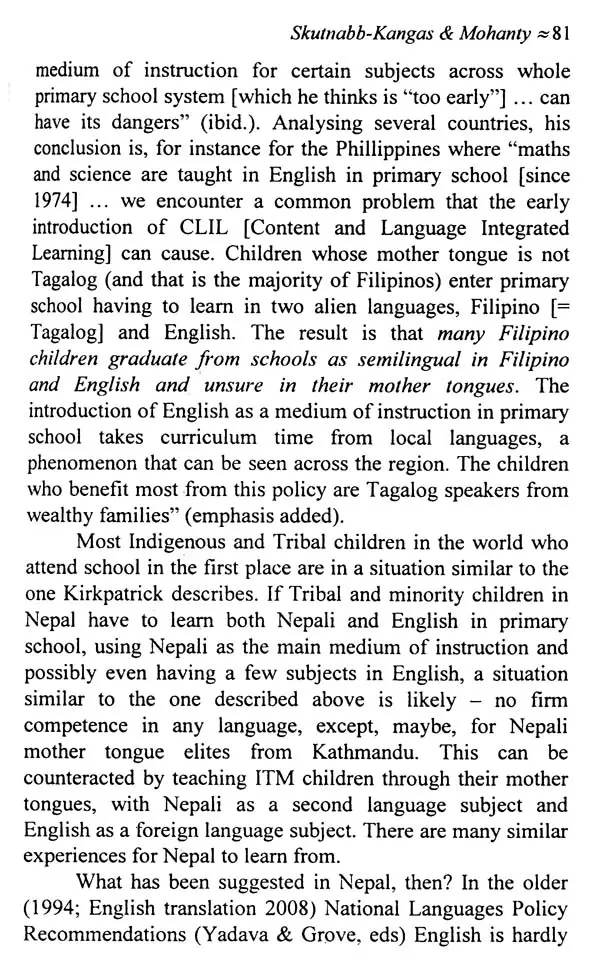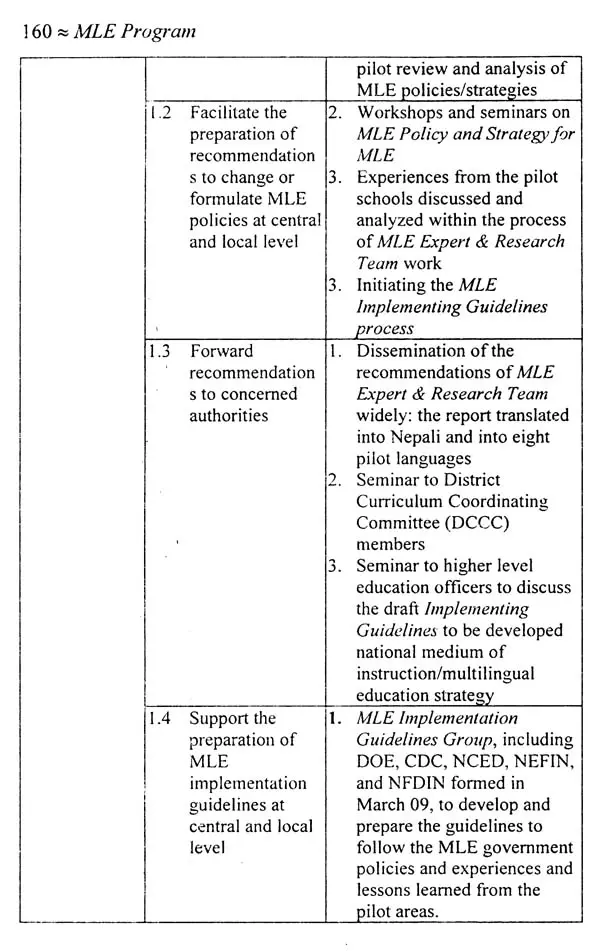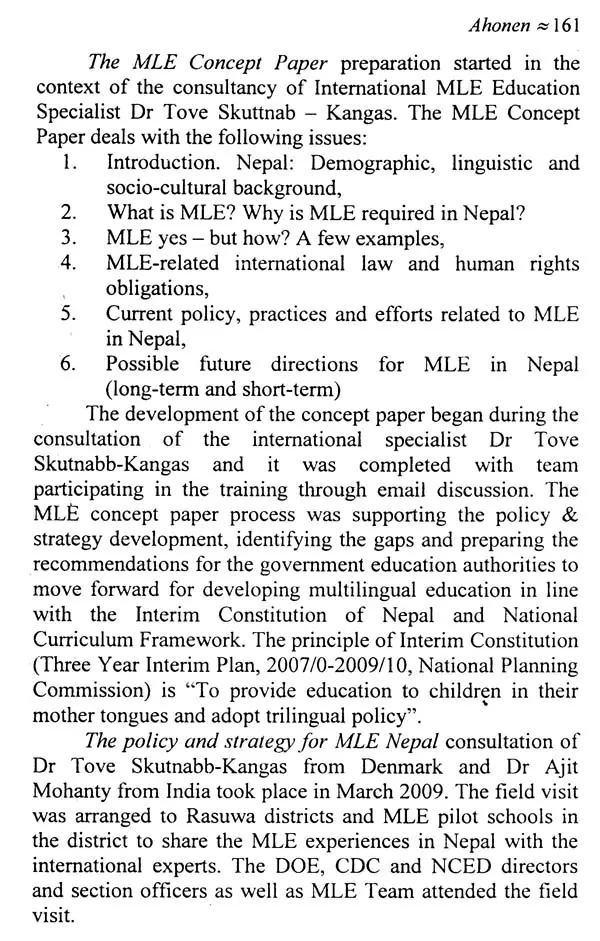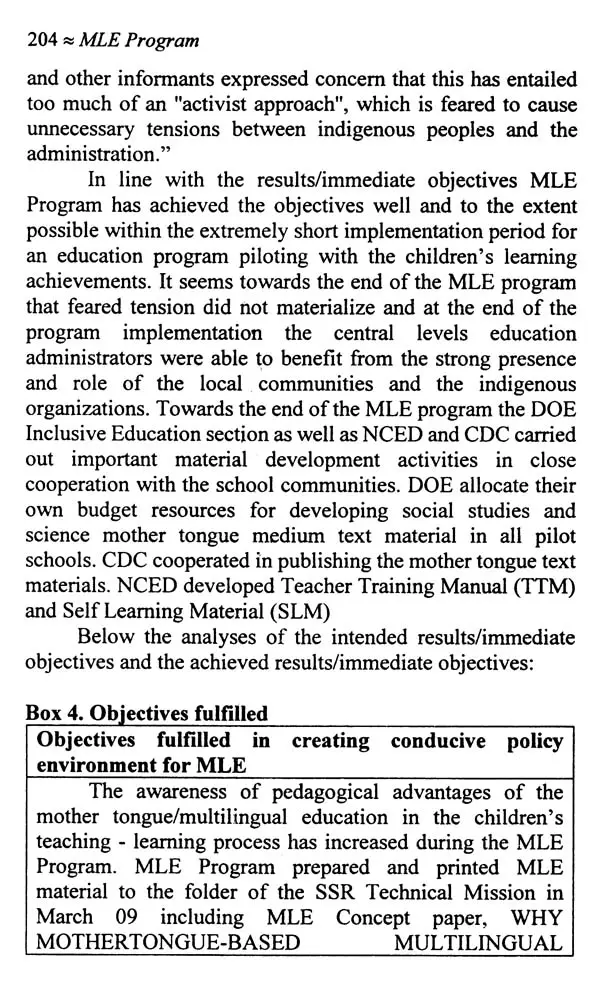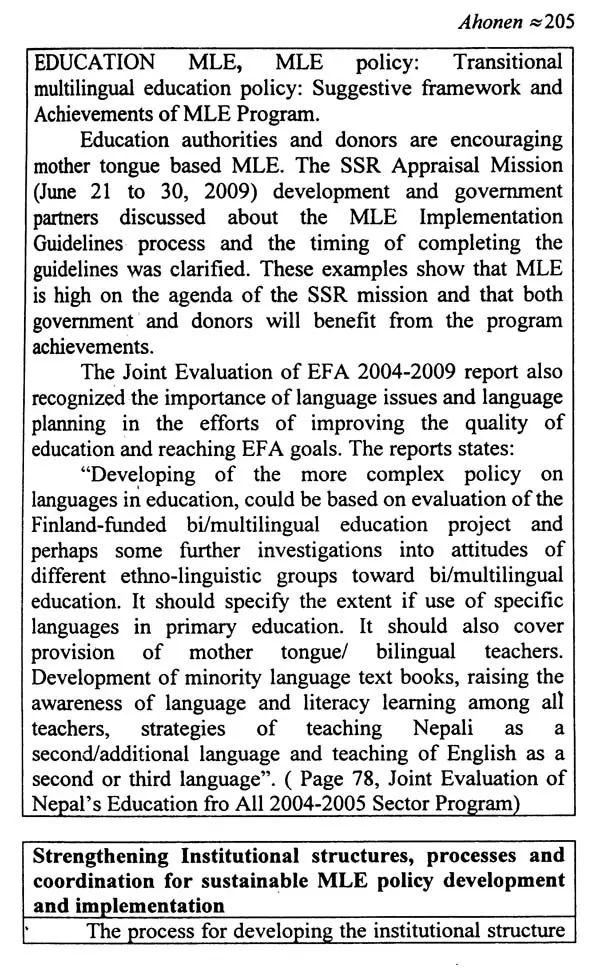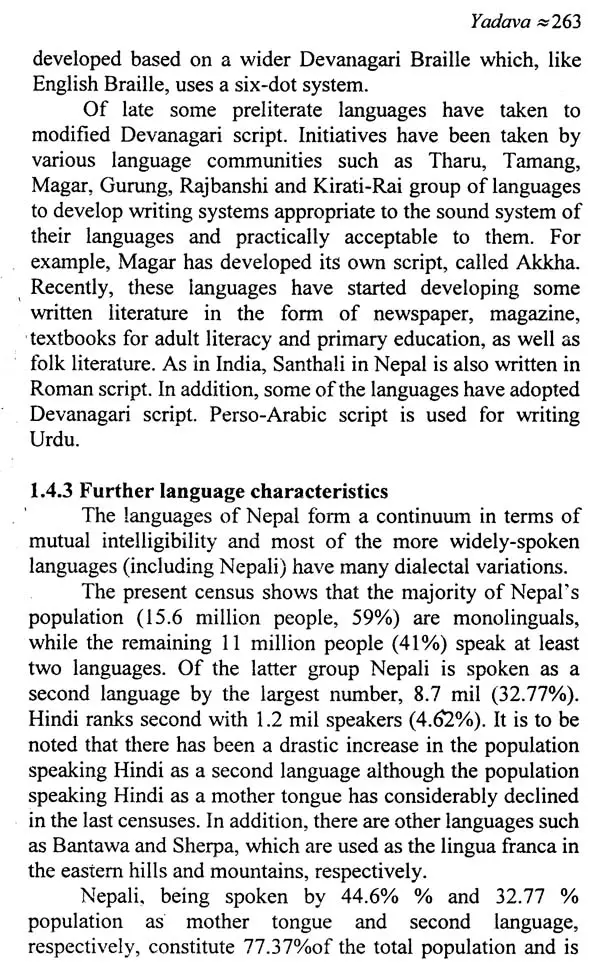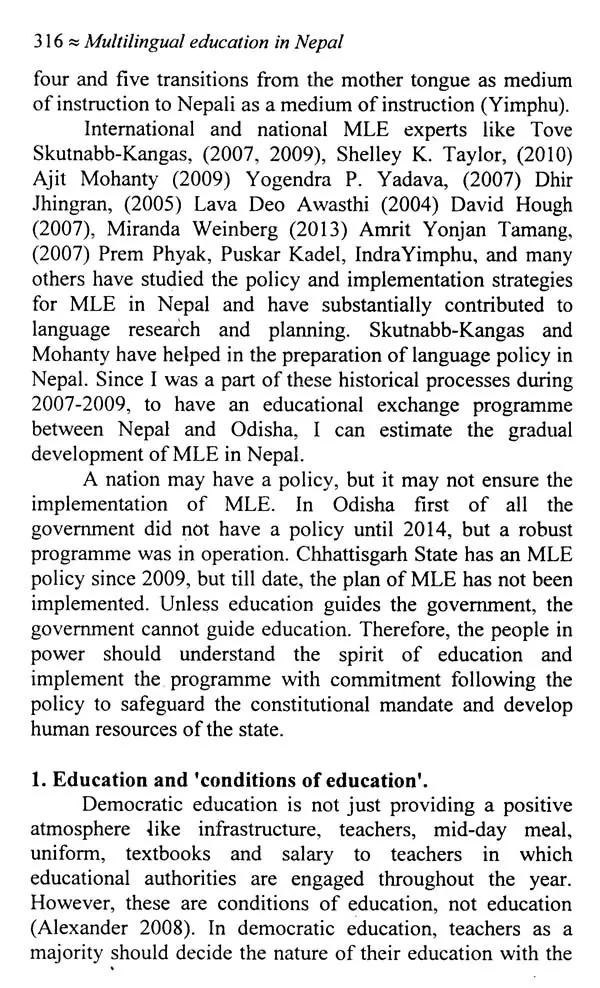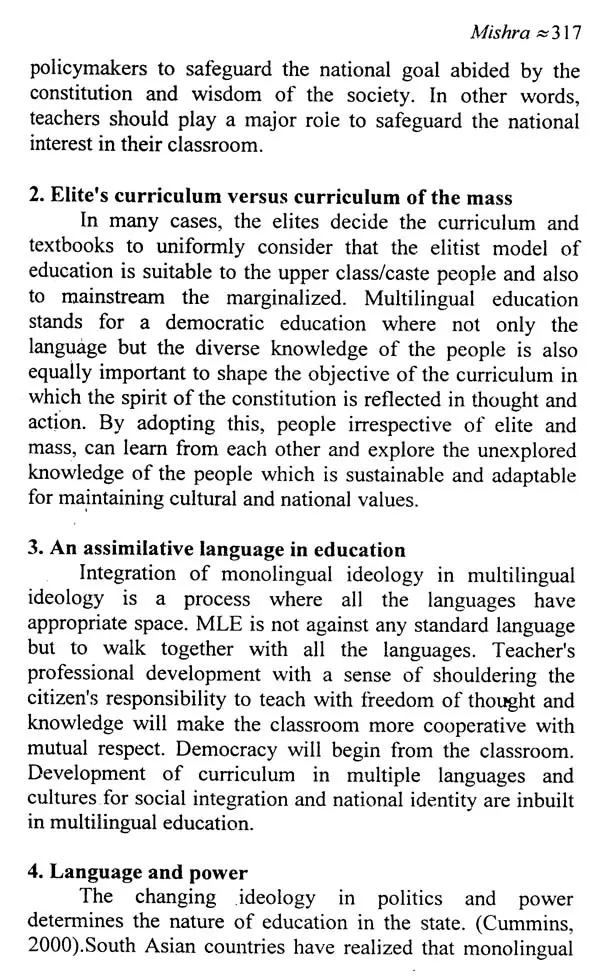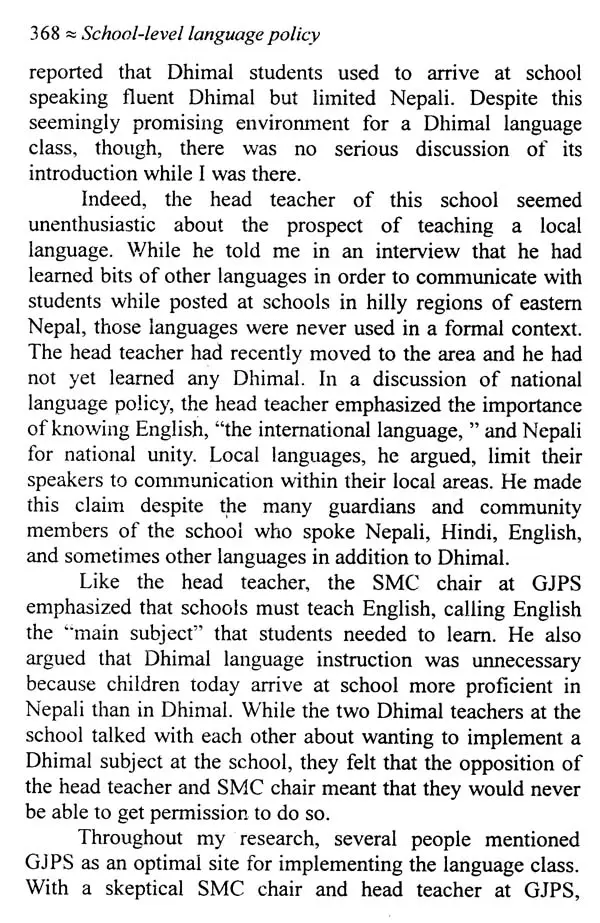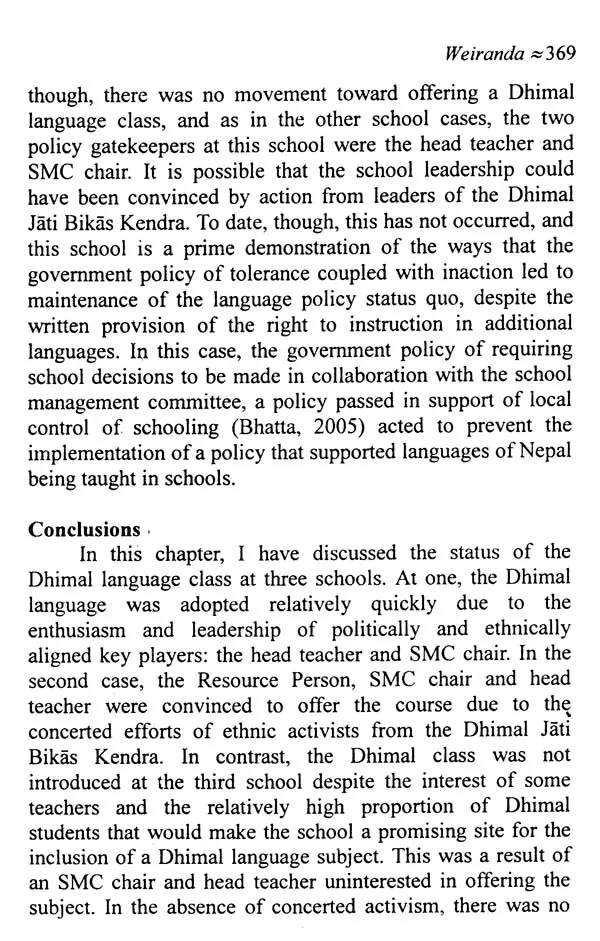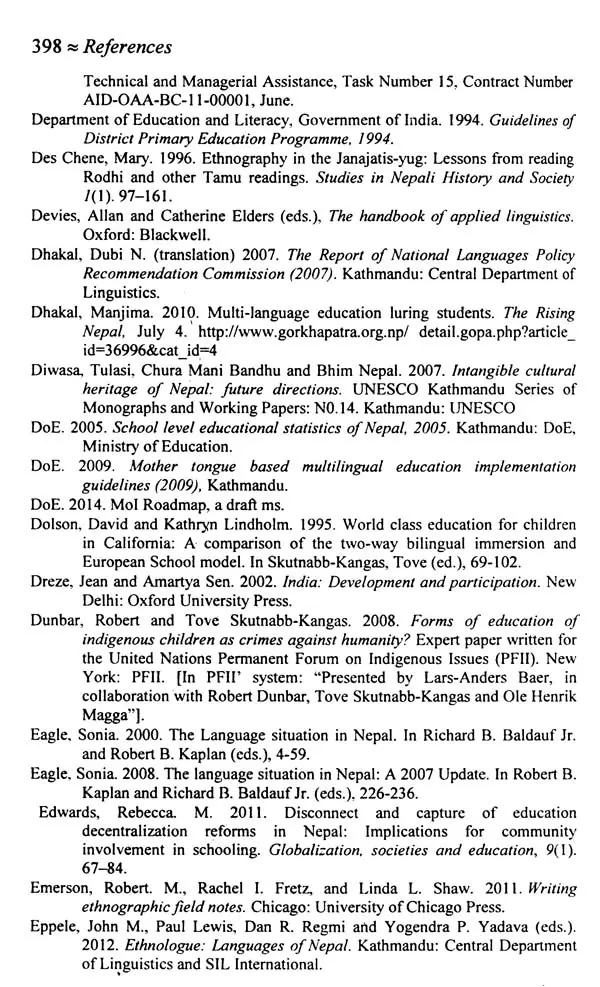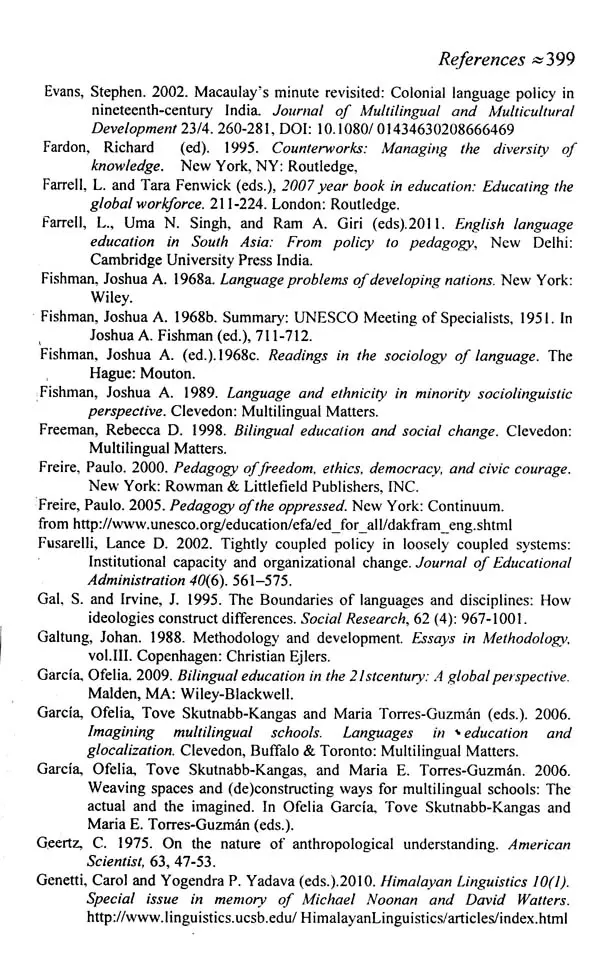
Perspectives on Mother Tongue-Based Multilingual Education in Nepal
Book Specification
| Item Code: | UAG673 |
| Author: | Yogendra P. Yadava and Lava Deo Awasthi |
| Publisher: | NEPAL Academyn, Kathmandu |
| Language: | English |
| Edition: | 2020 |
| ISBN: | 9789937723282 |
| Pages: | 432 |
| Cover: | PAPERBACK |
| Other Details | 8.50 X 5.50 inch |
| Weight | 350 gm |
Book Description
Basic education systems in multilingual societies have almost been monolingual globally, using -a dominant language. Nepal is not immune from this predicament.
Although the Constitution of Nepal (2015) has enshrined children's right to education through mother tongues, Nepali, the dominant and official language in the country, has alone been practically used as the medium of instruction (Mol) at community schools though private schools have invariably been using English as Mol. It is, however, to be noted that there has been a growing trend recently to shift to English as Mol even at community schools for facilitating mobility, foreign employment, technical education, and so on.
There has almost been unanimity in the literature that learning occurs best in the language a child speaks most fluently, which is obviously a home language or mother tongue. Basic education through mother tongue can be helpful for developing children's cognitive capital and for providing them with a .firm foundation to learn other languages more quickly. Mother Tongue-Based Multilingual Education (MTB MLE) in early education has been more effective in enhancing reading ability, conceptual development and learns ability of other languages (UNESCO Bangkok, 2014). As a result, children have been found better at reading comprehension, mathematics and learning a second or foreign language.
Several longitudinal studies of mother tongue medium and English medium schools in Asia Pacific region including Papua New Guinea (PNG) also support it. In PNG, the most linguistically diverse country in the world with over 800 distinct languages spoken by 6 million people, a mother tongue-based bilingual education programme was introduced in 1995. A longitudinal comparison of its MT and English medium schools has found that the former has been more effective in enhancing quality education than the latter. In Nepal as well a similar study comparing Rajbanshi medium and Nepali medium schools shows that dropout rate has been reduced and there has been better performance in other subjects such as Nepali, mathematics and science in the former than the latter (Rajbanshi 2014).
Book's Contents and Sample Pages
